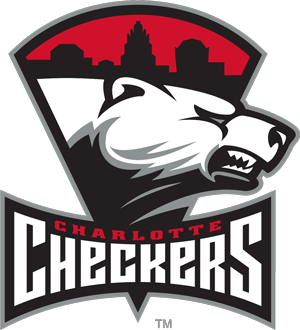For the third consecutive season, the Checkers rolled out an entirely new corps of captains.
Granted, a big part of the nature of the American Hockey League is the turnover of players year-to-year, but the Checkers have had a somewhat consistent group of captains for their entire existence. Of the team’s first four seasons, Brett Sutter served as captain for three of them and Chris Terry or Nicolas Blanchard wore an A in each of them. But the last two seasons have seen the departure of all those faces.
On top of a largely revamped roster, the 2015-16 season brought with it a new head coach for the first time in the club’s AHL history.
Then head coach Mark Morris, who recently accepted the same position at St. Lawrence University, employed a unique strategy in finding his new leaders. He used the team’s long season-starting road trip as a trial period, having several players rotate through wearing letters.
“It was a feel out process for me, trying to wait for someone to emerge,” said Morris early on in the season. “I think it’s a healthy thing, that way everyone feels a part of it. I guess I’ll just feel it out as it goes as to who’s playing well and which guys are doing a bit more than others.”
Morris’ search produced some interesting results.
Donning the C as the fourth captain in team history would be Derek Ryan, a newcomer who was partaking in his first pro season on North American soil.
“His consistent play and positive attitude proved to me that he was worthy of being a captain for this group,” said Morris when he named the captain. “Derek is not a vocal guy, but he lets his actions speak volumes about who he is. He’s a guy that’s serious about his job. He competes extremely hard and he’s been a winner. He’s a guy that can produce and lead with his actions.”
Flanking Ryan would be a few different alternate captains, but it eventually shook out to be established leader and fourth line grinder Kyle Hagel and second-year pro Patrick Brown wearing the As.
Fast forward to the end of a rollercoaster season that saw the team hit the highest of highs and the lowest of lows. So how did the new captains fare?
As team captain, Ryan took a somewhat different approach when it came to his leadership style.
“It was a bit of a surprise to get the C at the beginning of the year, being a new face in North America and in the organization so I didn’t really know anybody,” said Ryan. “I’m not the most vocal guy in the locker room, I’m not going to be yelling at guys or trying to motivate guys that way. I’m more like, ‘This is how we should do it, follow me and look at how I’m doing it.’ I lead by example.”
Ryan’s example was something that his teammates seemed to embrace.
“Derek was our best player all year,” said Hagel. “I think that if your best player can also be your captain, that’s a good thing. The best players on the team are going to have people look up to them and follow them, whether they’re the captain or not. So when it works out that that guy is actually someone who has good moral fiber and cares about winning and wants to improve and wants to drag the other guys into the fire, that’s great. He’s a great guy and I can’t say enough about him.”
While Ryan may have been new to this continent, he is very familiar with being a pro in highly competitive leagues. The experience he brought with him from being an elite talent in Europe was easily translatable, and he was able to pass along that hard-working attitude to a young Checkers squad.
“I think that my game lends itself to be good for that role as well because I’m not only a skilled player but I’m a hard worker, I’m consistent,” said Ryan. “I pride myself on being a consistently good hockey player every day whether it’s practice or an off day or a game day, it’s always the same. That’s the key to being a pro hockey player.”
“He’s not a vocal guy, but his actions spoke volumes,” said Morris. “He led by example. Very seldom did he have an off night.”
If Ryan was on the quieter end of the captaincy spectrum, it was Hagel who took on more of the traditional vocal role.
After serving as an alternate captain toward the end of the 2014-15 season, Hagel took on the letter full time in his second year with Charlotte. The veteran was already an established leader in the locker room, coming off being named the AHL’s Man of the Year, so Morris’ move to name him a captain was a fairly obvious one.
“He was the policeman for the team,” said Morris of Hagel. “He led this team in many ways. He really unified our team this year.”
On top of taking young players under his wing, keeping his teammates involved in the community and leading in the locker room, Hagel’s top-notch work ethic bled through to the entire team.
“There’s nobody that worked harder than he did, with his preparation and his commitment to this organization,” said Morris. “He does more than just practice. He puts himself through some pretty rigorous workouts. His type of work habits are infectious to the group.”
Perhaps the most surprising of the trio of captains was Brown. In just his second pro season, the forward was handed the hefty role of alternate captain. But the 23-year-old, who served as a captain during his time at Boston College, quickly embraced his new leadership position.
“Brownie, he’s just a natural leader,” said Hagel. “He has good, quality leadership skills and he works so hard every day before and after practice.”
While taking on the mantle of alternate captain, Brown also saw his level of play increase, more than doubling his point production from his rookie year.
“He played with a lot more confidence,” said Morris. “He’s a warrior. He puts in the time, he prepares well, he carries himself like an NHLer. I think as his ice time increased and his responsibilities increased, he started getting rewarded.”
As a group, Ryan, Hagel and Brown were certainly tested throughout the season, as the team battled through gut-wrenching skids, costly injuries and complete roster overhauls. But they seemed to weather the storm and kept the team from falling apart.
“The three of us got along really well,” said Hagel. “We tried to keep the team glued together, especially when things got a little rough. [Not making the playoffs] is still going to hurt right now, it’s still going to be raw right now for a week or two, but hopefully we can step back after that and look forward.”
Though they may not have been the obvious choices, this leadership group certainly pulled their weight and helped the team grow, both during the season and, hopefully, heading into next year.
“Guys like Brown and Hagel and Ryan are good examples of what you need to do to help an organization improve,” said Morris. “Those are the types that really set the bar for the rest of the team.”





